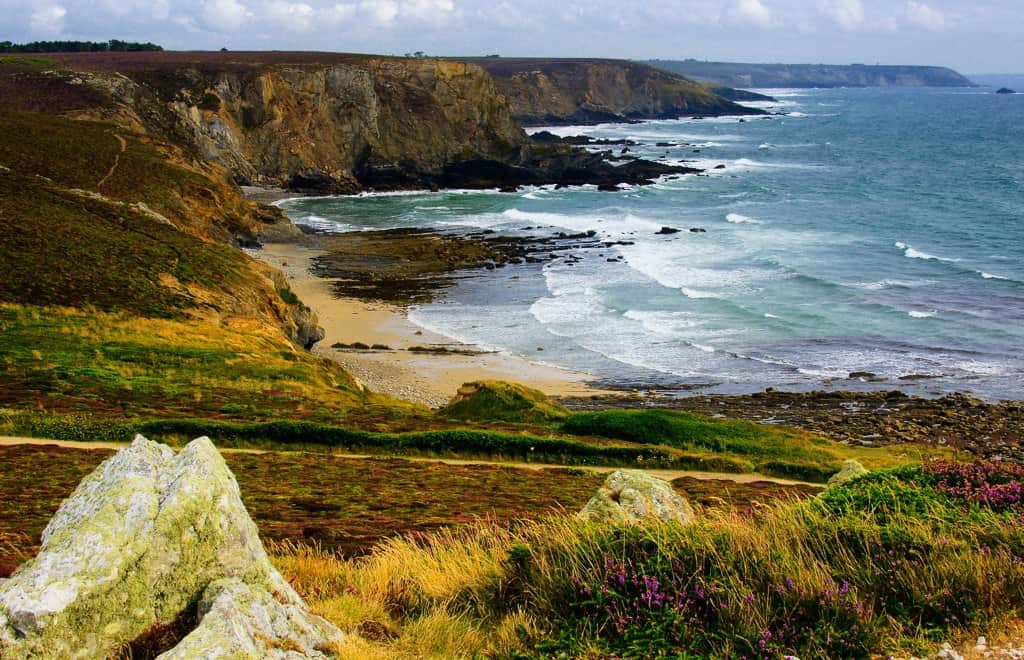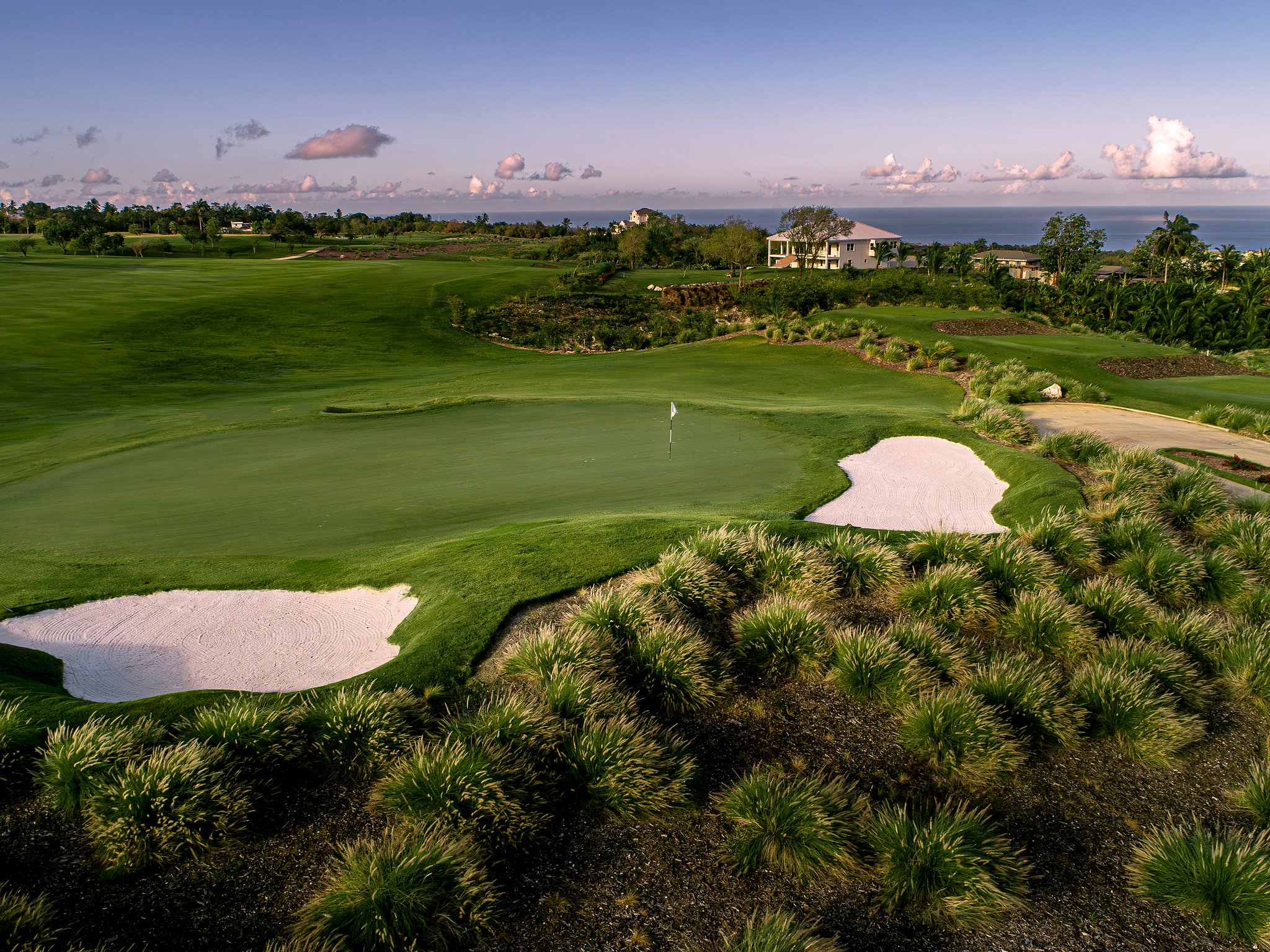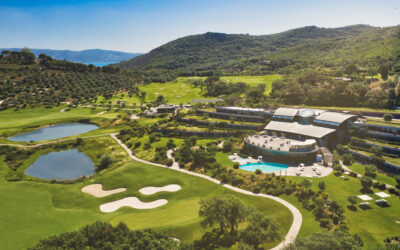France is the most popular holiday destination in the world. And the French possibly love it even more than the rest of us. French golfers, for example, rarely take their clubs with them even on the very few occasions when they travel abroad. That’s partly because golf is cheaper in France, the fairways are less crowded and, perhaps most important of all, there aren’t that many French golfers in the first place.
You would have thought that the historic exploits of Jean Van de Velde at Carnoustie in 1999 would have spawned a whole generation of young Frenchmen eager to play with their trousers rolled up. Not that anyone would frown upon you if you did play with your trousers rolled up because the few French who do play the game do so in a way that is almost unrecognisable to those of us brought up to regard plus fours as the height of fashion and golf clubs as sort of secular cathedrals.
Historically a rather ill disciplined lot (hence La Revolution in 1779), the French appear to play golf purely to enjoy themselves, which is, of course, hopelessly naïve. Not only that, but women and children are clearly welcomed everywhere and, when it comes to what to wear, pretty well anything goes. So casual is the atmosphere that I felt almost overdressed with my shirt hanging outside my own baggy shorts in a style that would give the Colonel sipping gin and tonic in the spike bar back home an attack of apoplexy.
Mystical Mix
Both geographically and culturally similar to those other Celtic golf havens – Scotland, Ireland, Wales and Cornwall – Brittany in the north west of France is blessed with that mystical mix of rugged terrain, pounding surf and wild weather. These elements combine to create some of the most appealing golfing opportunities to be found anywhere in France.
Just a few miles inland from Brittany’s south coast lies Saint-Laurent. Since it has hosted the French professional championship on a couple of occasions back in the late 1980s and the National Open in 1995, the course is clearly capable of providing a tough test. However, despite the fact that it weaves through an oak and pine forest, the fairways are pretty generous and the trees are less of a threat than they are protection from the wind. Only on a couple of the tighter holes do they encroach sufficiently to persuade you not to risk taking the driver.
Golf de Saint-Laurent
At a tad under 6200 yards off the yellow tees, this gently undulating Michael Fenn design is not too long either and, despite a couple of steepish hills, is eminently walkable with the help of un chariot (trolley). Possibly rather flattered by its selection in a French golf magazine as one of the nation’s top 40 courses, it nevertheless is an extremely enjoyable inland track which is genuinely suited to players of all standards.
Just a few miles up the coast is Baden. Although not an authentic links, this seaside course offers frequent glimpses over the pretty estuary of the River Auray and is full of interest. The sloping terrain makes it rather more challenging than it might at first appear and the flourishing gorse is rightly regarded as the golfer’s enemy since it renders even a cursory look for a ball a pretty fruitless exercise.
Golf de Baden
Generally rather benign and just under 6300 yards off the yellow tees, the course rapidly morphs into something of a beast when the wind starts howling, which is not infrequently. And don’t let the rather dreary appearance of the clubhouse discourage you from staying on after your round because the food is delicious.
Lovely and the Largest
On the north coast of Brittany lies the Le Tronchet course at Saint-Malo Golf Club. A magnificent example of the new generation of French golf clubs, it’s a cracker. With a decidedly upmarket feel, it’s more than just an impressive parkland course as there is a delightful hotel and all the associated comforts.
On the edge of the Mesnil forest and bordering the lovely Lake Mirloup, it covers 250 acres and is thought to be the largest course in Brittany. It starts and finishes with a par five and certainly feels spacious with more than enough room to open your shoulders and let rip.
It has the feel of an old, established estate with the lake adding a considerably to the visual appeal. Beautifully presented and in excellent nick it is certain to grow in popularity. Two especially memorable holes are the par three ninth over a lake to a well-protected green and the 16th, which calls for precision off the tee and a nerveless approach over a ravine to an elevated green.
Saint Malo Golf Resort
My only criticism of the course is that there are far too many white stakes indicating far too much in the way of out of bounds. It’s my contention that, ideally, there should be no out of bounds on a golf course. Being sensible, however, it’s sometimes necessary to discourage deliberate driving onto an adjacent fairway where to do so shortens a hole and creates a safety problem. For my part, I would much rather that OB stood for something positive like Over to Brittany.
Why We Like It
Golf in France is wonderfully relaxed with far fewer regulations and restrictions than, say, on the other side of the English Channel. Blessed as it with attractive terrain and hundreds of miles of rugged coastline, blissfully uncrowded Brittany is one of the best areas in France in which to tee it up.
 Golf writer Clive Agran, 65 and a journalist for more than 40 years, Clive Agran still wonders what he’ll do when he grows up. Nicknamed ‘Silky Swing’, he travels the globe looking for the world’s best golf courses.
Golf writer Clive Agran, 65 and a journalist for more than 40 years, Clive Agran still wonders what he’ll do when he grows up. Nicknamed ‘Silky Swing’, he travels the globe looking for the world’s best golf courses.






 0
0









